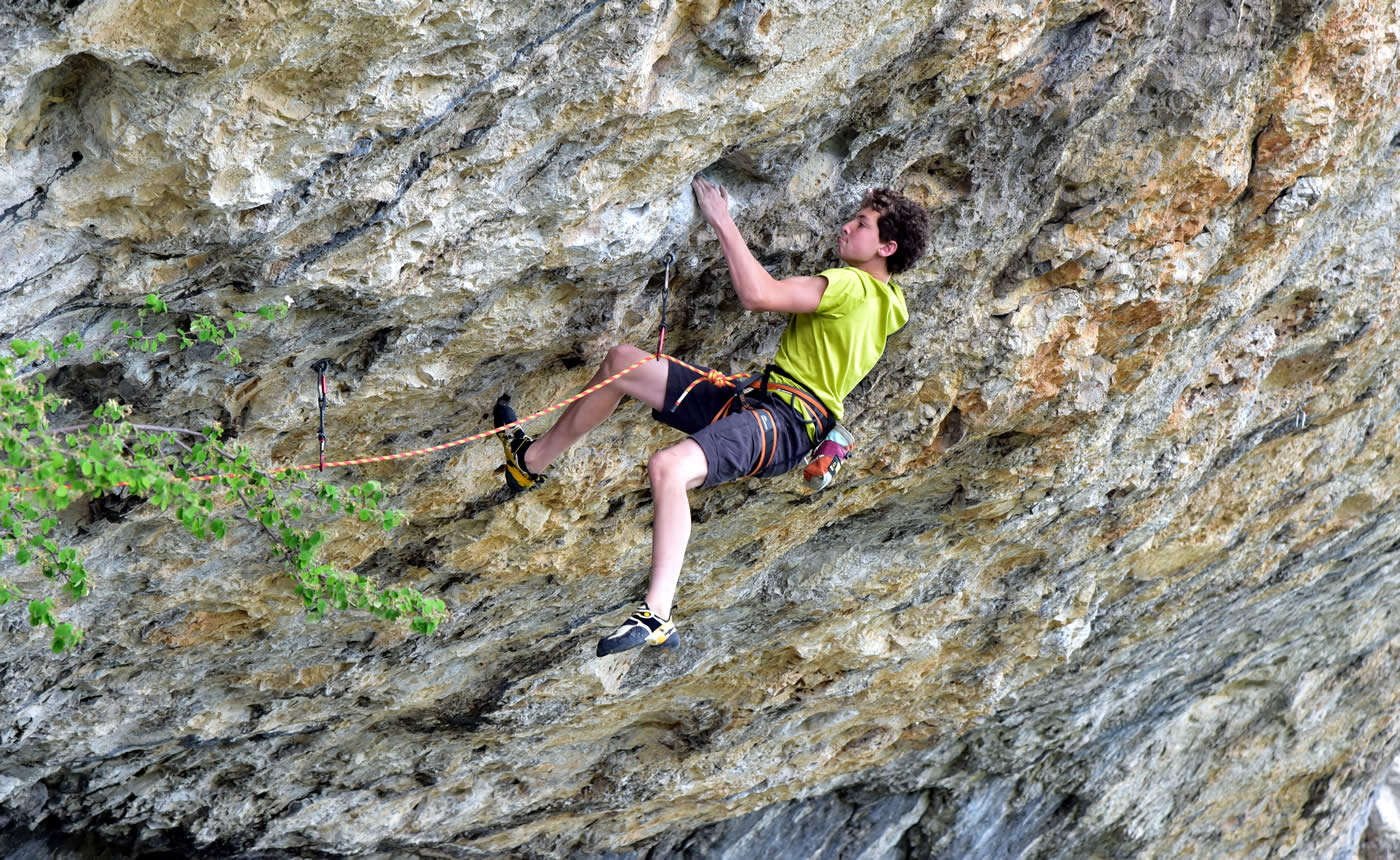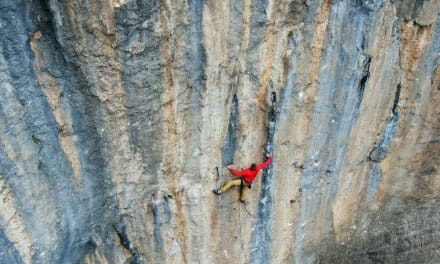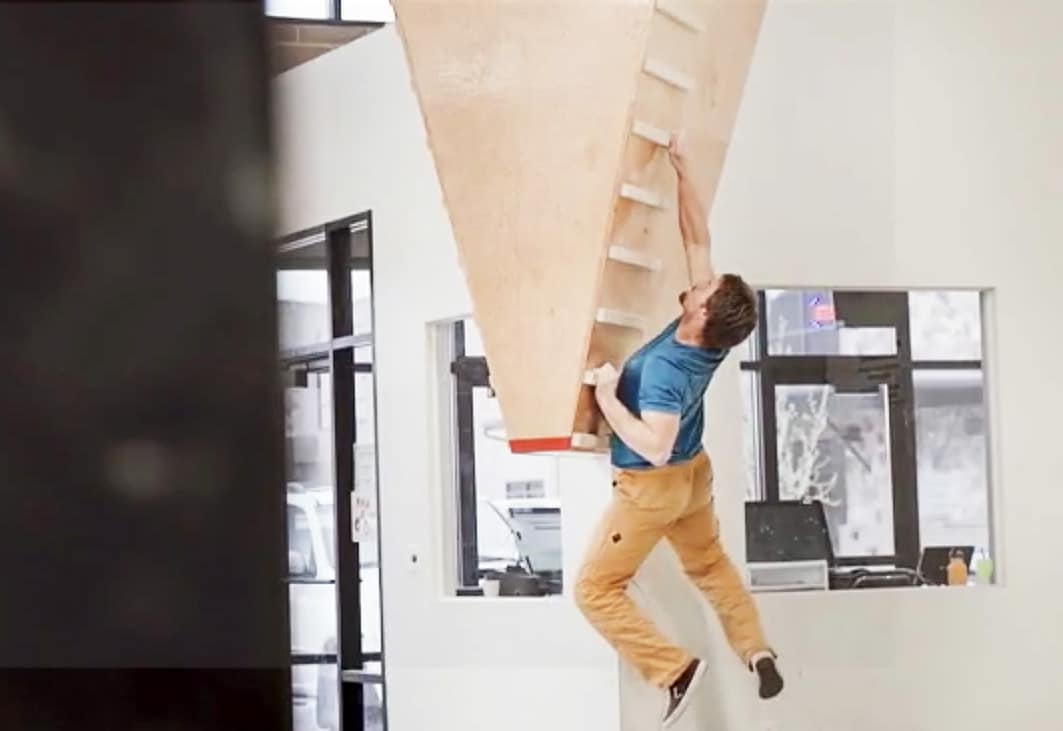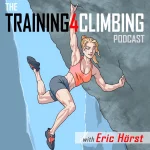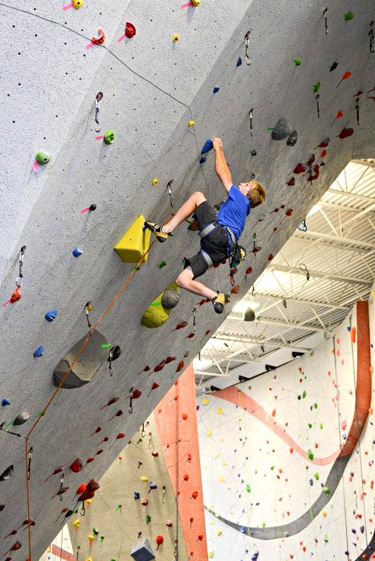
This ain’t no soccer field! Indoor lead climbing is powerful mind-strengthening activity for youths with the necessary skills and adult guidance.
When it comes to mental training for youth climbers, it matters to understand their cognitive level and trajectory of development so you can tailor complexities to what they can effectively process.
(This article was originally published in January 2015.)
My advice on cognitive training for youth climbers parallels almost everything I’ve outlined above on technical training. Start with the most basic mental challenges—developing confidence and poise in climbing hand-over-hand up juggy vertical routes—and gradually introduce more challenging terrain that requires visualization of sequences and the vertical chess match of reading many moves ahead while on a climb.
For some kid climbers, the process is a natural and apparently simple one to learn, as they quickly solve climbing wall puzzles on the fly. Other kids will require more coaching input to help them solve the puzzle and “see” the moves to be performed. A laser pointer is a must-have coaching tool for helping a young climber see and mentally rehearse a tricky sequence.
Ages 8 and Under
For younger climbers—say, under age nine—it’s important to treat a climbing session as more of a playground experience than a training session. A good coach will present climbing games that keep the focus on having fun. Learning of climbing skills and strategies is then a by-product.
Ages 9 – 13
Climbers between the ages of nine and thirteen can be presented with more complex instruction on critical cognitive skills such as mental rehearsal, visualization, arousal levels, fear control, and risk management. With good instruction, it’s within this age range that many youth climbers—usually those with several years of experience—put together the complex technical-and-mental puzzle that is hard climbing. From there, they can suddenly break into the lofty grades of bouldering V8 and/or lead climbing 5.12 (or harder).
Venturing Into the Outdoors
Given a growing mastery of the fundamental technical and mental skills, some youth climbers between eight and twelve are ready to be introduced to the challenges and joys of outdoor climbing. As with the introduction to lead climbing indoors, however, taking kids outside is a big step with no need for a rush. The earliest transitioners to outdoor climbing will be those whose parents are experienced climbers themselves. This way, the parent can be responsible for making the tough calls on what climbs are safe or unsafe for a youth to attempt. For those kids without a climbing parent, it’s best to wait until at least twelve or thirteen to venture outdoors. Even then, do so only in the presence of a mature, qualified climbing coach and/or instructor.
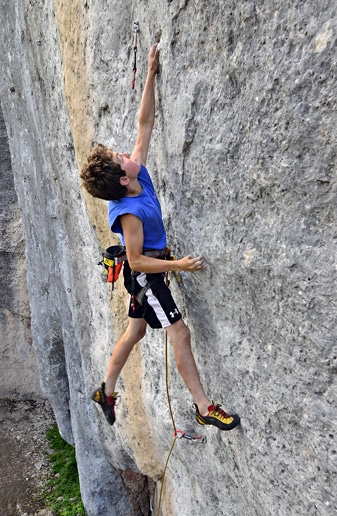
Jonathan Hörst (age 11) sending Galactic Emperor (5.14a), Ten Sleep Canyon, WY.
No matter if the outdoor climbing adventure is bouldering, toproping, or lead climbing, the game is pretty much the same as it is indoors. The main difference is that the technical and mental demands are far greater on the infinite playing field of Mother Nature’s rock walls. Given a good coach or experienced parent, however, climbing outdoors offers an extraordinarily rich environment for learning and experiencing the wonders of nature.
The bottom line: Outdoor climbing can be nearly as safe as indoor, but there is certainly far greater potential for climber error, belayer error, objective dangers, and more to come into play. Proceed with caution.
Competition Climbing
Just as outdoor climbing will stretch a youth climber’s cognitive abilities in new and exciting ways, so will competition climbing. For many kids whose parents don’t climb, competition offers an excellent way to add a more difficult cognitive aspect to the game. Many climbing gyms hold local youth competitions as a great introduction to the unique challenges and pressures of competition climbing. USA Climbing organizes more formalized regional competitions for both bouldering and roped climbing. Young climbers between the ages of eight and eighteen compete in five different age divisions for medals and to qualify for a national championship event.
Youth Training Articles by Hörst (please share with fellow coaches and youth climbing parents)
- Overview of Training for Youth Climbers
- Skill Development of Youth Climbers
- Age-Appropriate Strength Training for Youth Climbers
- Youth Climbing Injuries and Prevention
Copyright © 2000–2022 Eric J. Hörst | All Rights Reserved.

